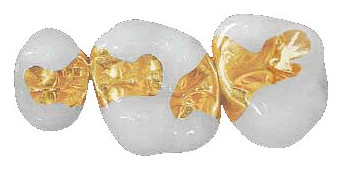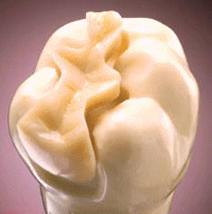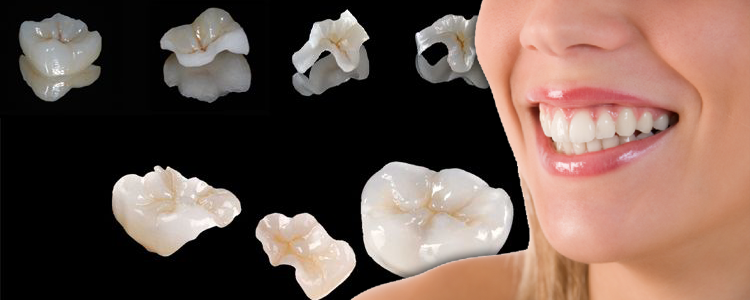Inlays & Onlays
When the decay, broken teeth and tissue is much larger, we can choose the method of filling materials used in the cost of the cheapest but the filling is unstable and fragile, worse, or cause food stuffed in. Instead of make a cown the dentist will do an Inlay (one tooth surface) or onlay to cover at least an entire tooth surface. Technique: The prepared teeth Inlay - onlay is similar to a normal sinus filling, which means users get a clean drill teeth rotted tissue. Then, take the tooth marks and technicians will perform pieces of inlay - onlay fits prepared tooth cavity. Finally, the pieces Inlay - onlay will be fitted tightly into the tooth cavity with a special cement.
Materials for Inlays & Onlays
Inlays and onlays are usually made from four types of materials:
Porcelain :A porcelain inlay/onlay is a custom-made and shaped insert that perfectly fits inside of a prepared tooth. It is securely bonded to prevent further decay and stabilize the surrounding tooth structure, and it looks completely natural.
Gold : Gold is an excellent choice for an inlay or onlay due to its long term stability and high survival rate in the mouth. The amount of tooth preparation required can also be less than for a porcelain inlay or onlay. The potential disadvantage of gold is due to its colour.
Composite: Inlays and onlays can be constructed in composite resin, it has a similar lifespan to porcelain inlays or onlays. Many dentists like composite inlays and onlays because they are much less abrasive than porcelain and so kinder to the opposing teeth.
Zirconia









